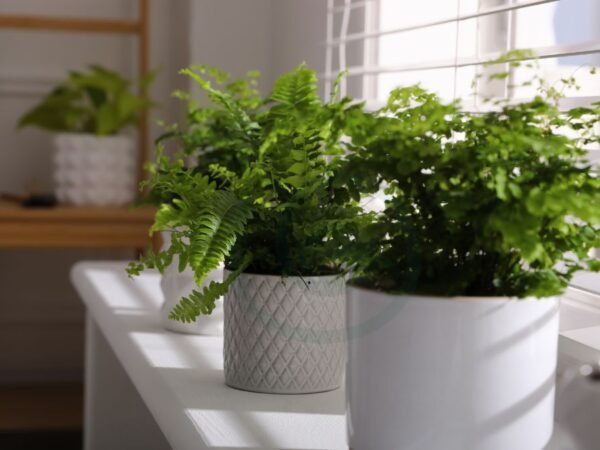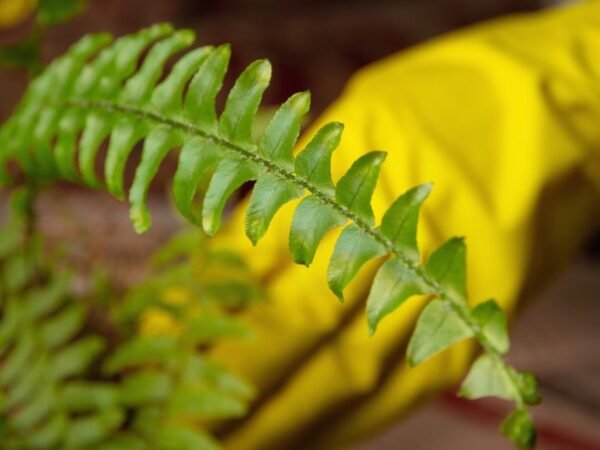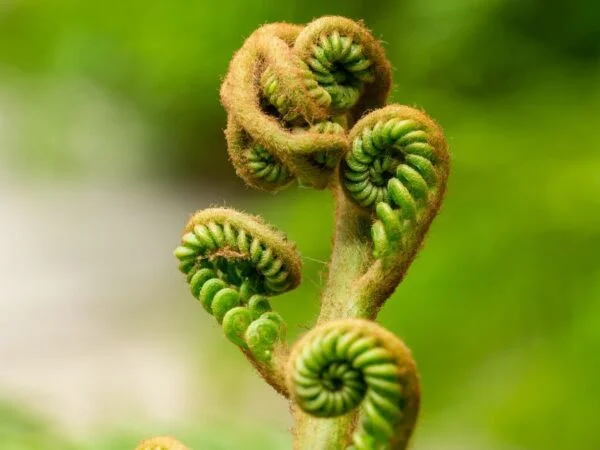Yellowing fronds on your ferns is a common houseplant woe, but it's rarely a cause for panic due to pest infestations or excess water problems. With a little detective work, you can identify the culprit and get your fern back to its lush green glory.
Several factors can contribute to yellowing fern fronds, including incorrect watering, lack of light, nutrient deficiencies, pest problems, or infestation. Let's delve deeper to diagnose the issue and find a solution!
There's more to explore! Each of these causes can manifest in different ways on your fern. For instance, overwatering can cause yellowing throughout the frond, while underwatering might yellow just the tips. Keep reading to learn how to pinpoint the exact cause and bring your fern back to health!
Key Takeaways
- Identifying Causes: Understand the reasons behind your ferns turning yellow to address the issue effectively.
- Watering Practices: Adjust your watering routine by ensuring proper drainage and avoiding overwatering to maintain healthy ferns.
- Light Conditions: Place your ferns in locations with adequate but indirect light to promote vibrant green foliage.
- Temperature Harmony: Maintain a consistent temperature range suitable for ferns to thrive and prevent yellowing.
- Fertilization Correction: Use a balanced fertilizer and follow a proper fertilization schedule to provide essential nutrients without causing harm.
- Preventative Measures: Implement regular inspection routines and environmental controls to prevent yellowing in ferns.
Identifying Causes
Watering Waltz
Regularly check soil moisture to avoid issues from overwatering or underwatering. Adjust watering frequency based on the soil's dryness level for optimal fern health. Utilize a watering can with a long spout for precise and targeted watering.
Sunlight Serenade
Ensure the fern is exposed to bright, indirect light to support its growth. Monitor sunlight exposure to prevent any potential leaf scorching occurrences. Rotate the plant periodically to ensure even distribution of light across all leaves.
Temperature Tango
Maintain consistent temperature and humidity levels to keep your fern healthy and thriving. Avoid sudden temperature changes that could stress the plant and lead to yellowing leaves. Protect the fern from drafts and extreme temperature fluctuations by placing it in a stable environment.
Root Matter
Regularly inspect the roots of your fern for any signs of rot or distress indicators. Healthy roots should appear white and firm, serving as a foundation for overall plant health. If root issues are detected, consider repotting the fern to provide it with fresh, healthy growing conditions.
Watering Practices
Frequency Technique
Water the fern when the topsoil feels dry to the touch. Adjust watering technique to prevent waterlogging in the soil. Consider using a self-watering pot for consistent moisture levels.
Right Fertilizer
Choose a balanced fertilizer suitable for ferns. Apply fertilizer every 5-7 weeks during the growing season. Opt for organic compost as a slow-release nutrient source.
Light Conditions
Ideal Exposure
Position the fern in a spot with bright, indirect sunlight. Avoid direct sunlight exposure to prevent leaf damage. Rotate the plant periodically for uniform light exposure.
Seasonal Adjustments
Adjust watering frequency and light exposure based on seasonal changes. Protect the fern from temperature extremes during winter. Consider moving the plant indoors during colder months.
Temperature Harmony
Humidity Control
Maintain humidity levels above 40% for optimal fern growth. Use a humidity tray or room humidifier to increase moisture. Mist the fern occasionally for a natural environment feel.
Create a stable environment with consistent temperature and light levels. Shield the fern from air vents and drafts to maintain stability. Utilize a pebble tray to boost humidity around the plant.
Fertilization Correction
Nutrient Balance
To ensure your fern stays healthy, provide essential nutrients through proper fertilization techniques. Monitor the soil's pH levels regularly to support optimal nutrient absorption. Adjust the fertilization schedule based on the fern's growth stage for best results.
Application Methods
Evenly distribute fertilizer across the soil surface to promote uniform nutrient uptake by the fern. After fertilizing, remember to water the plant adequately to prevent root burn. For young ferns, it's advisable to use a diluted fertilizer solution to avoid overwhelming their delicate roots.
Pruning Techniques
When to Prune
Pruning yellow leaves selectively helps the fern by promoting new growth and overall plant health. It is essential to remove dead or damaged fronds periodically to maintain the plant's vitality. Utilize clean and sharp pruning tools to prevent infections from spreading.
Pruning Signs
- Selectively prune yellow leaves for new growth.
- Remove dead or damaged fronds for plant health.
- Use clean, sharp tools to prevent infections.
Tool Selection
- Opt for sharp, clean pruning shears for precise cuts.
- Ensure your blade is sterilized to prevent diseases.
- Consider long-handled tools for hard-to-reach areas.
Encouraging Growth
To promote healthy growth in ferns, it is crucial to provide optimal care conditions consistently. Using a balanced fertilizer can significantly aid in promoting both leaf and root development. Regularly monitor the plant's progress and make necessary adjustments to care practices as needed.
Preventative Measures
Pot and Drainage
Select a well-draining pot to prevent waterlogging, ensuring the plant's roots stay healthy and vibrant. The pot should have drainage holes to prevent water accumulation, which can lead to root rot. Choose a pot with enough space for the fern's roots to grow freely without becoming cramped.
Care Routine
Establish a consistent care routine for your fern, including essential tasks like watering, fertilizing, and monitoring its health. By creating a routine, you can ensure that your fern receives the necessary attention it needs to thrive. Be prepared to adjust this routine based on how your plant responds and any seasonal changes that may occur.
Soil Maintenance
When it comes to soil maintenance, using well-draining soil is crucial in preventing issues like waterlogging. If you notice the soil becoming compacted over time, consider repotting your fern to provide it with fresh, nutrient-rich soil. Adding organic matter to the soil can help improve nutrient retention and overall soil quality.
Environmental Control
Reflective Surroundings
Placing ferns near reflective surfaces can lead to intense sunlight exposure, causing yellowing. Monitor the plant for signs of sunburn due to reflected light, such as leaf discoloration. To mitigate this issue, adjust the fern's position to minimize light reflection.
Seasonal changes require modifications in care practices for fern maintenance. Shield the plant from temperature fluctuations during different seasons to prevent yellowing. Tailor watering schedules and light exposure based on the specific requirements of each season for optimal growth.
Inspection Routine
Grooming Practices
Regularly groom the fern by removing dead or yellowing fronds. Clean the leaves gently to remove dust and debris. Use a soft cloth or sponge to wipe the leaves clean.
Monitoring Adjustments
Monitor the fern's health regularly for any signs of stress. Adjust care practices based on the plant's response. Keep track of environmental changes and their impact on the fern.
Summary
In understanding why your ferns are turning yellow, you've delved into various factors such as watering practices, light conditions, temperature harmony, fertilization correction, pruning techniques, preventative measures, environmental control, and inspection routine. By identifying these causes and implementing the necessary adjustments, you can ensure the health and vibrancy of your ferns. Remember to maintain a consistent watering schedule, provide adequate light exposure, monitor temperature levels, apply suitable fertilizers, prune when needed, take preventive actions against pests and diseases, control the environment, and regularly inspect your plants for any signs of distress.
Take charge of your ferns' well-being by incorporating these strategies into your care routine. Your attention to detail and proactive approach will not only prevent yellowing but also promote lush greenery and thriving growth in your beloved ferns. Keep up the good work in nurturing your indoor garden!
Frequently Asked Questions
Why are my ferns turning yellow?
Ferns might turn yellow due to overwatering, inadequate light, extreme temperatures, lack of nutrients, or pests. Check your watering practices, light exposure, and fertilization routine to ensure your ferns receive optimal care.
Ensure you address the common issues first before seeking professional help.
How can I adjust my watering practices for yellowing ferns?
Water ferns only when the top inch of soil is dry to avoid overwatering. Ensure proper drainage by using well-draining soil and containers with drainage holes. Consider misting or using a humidity tray to maintain moisture levels.
Consistency in watering is key to maintaining healthy ferns.
What light conditions do ferns prefer to prevent yellowing?
Ferns thrive in indirect or filtered light, avoiding direct sunlight that can scorch their leaves. Place them near windows with sheer curtains or in areas with bright, indirect light. Monitor the light levels and adjust placement accordingly.
Regularly rotate your ferns to ensure even exposure to light.
How does temperature affect the health of my ferns?
Extreme temperatures, especially cold drafts and sudden temperature fluctuations, can stress ferns and lead to yellowing. Maintain a stable room temperature between 60-75°F (15-24°C) and keep ferns away from vents or radiators.
Consider placing a thermometer near your ferns' location to monitor temperature changes.
When should I consider fertilizing my yellowing ferns?
If your ferns show signs of nutrient deficiency like yellowing leaves, consider fertilizing during the growing season (spring through summer). Use a balanced liquid fertilizer diluted at half-strength every 4-6 weeks. Avoid overfertilizing as it can harm your plants.
[Special requests] Always follow the instructions on the fertilizer label for proper application.
Image Source: Paid image from CANVA





